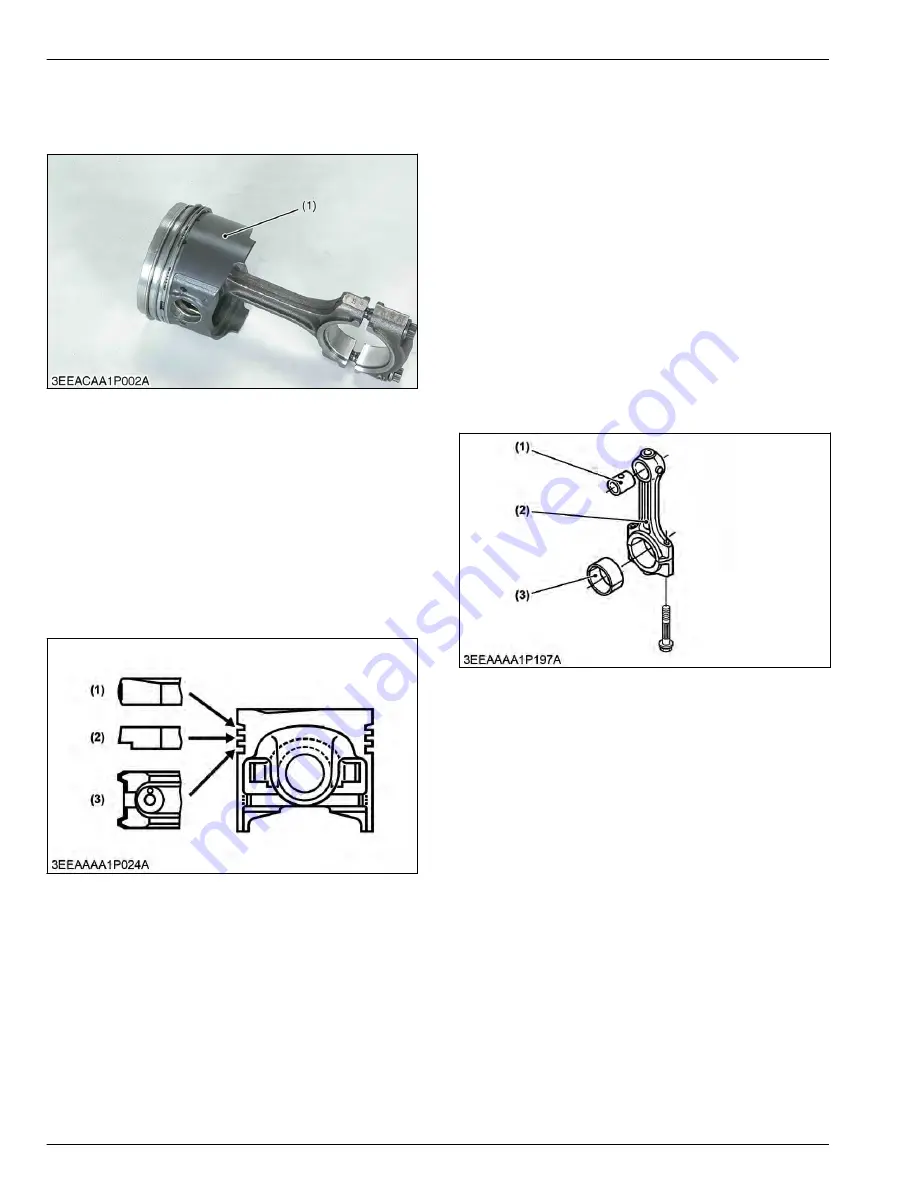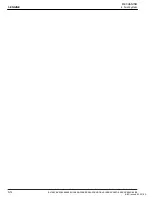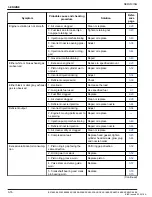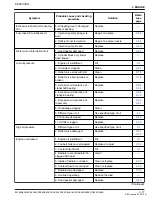
1.4 Function of piston
The piston creates the forces for the suction,
compression, power and exhaust cycles.
(1) Molybdenum disulfide
The reciprocating motion of a piston in the engine
cylinder creates the forces for the suction,
compression, power and exhaust cycles. The piston's
skirt is coated with molybdenum disulfide (MoS
2
) which
reduces the piston slap noise and thus the entire
operating noise. The molybdenum disulfide (MoS
2
) (1)
improves the fit of the piston with the cylinder and helps
to prevent scorching. This material helps resist metal
wears even with little lube oil.
1.5 Function of piston ring
(1) Top compression ring
(2) Second compression ring
(3) Oil control ring
Piston rings are classified as compression and oil
control rings. Diesel engine has two or three
compression rings around the piston head and one oil
ring just below them. The compression rings prevent
gases from leaking by the piston during the
compression and expansion strokes. They seal by
expanding out against the cylinder wall. The rings
expand by their own tension and also by combustion
pressure behind the rings during the expansion stroke.
The compression rings are split for easy assembly on
the piston. The piston rings are usually made of
hardened cast iron. To reduce the wear on the ring,
they are often plated with chrome on their contact
faces, or are coated their contact faces with
molybdenum disulfide.
• The top compression ring (1) is a keystone type
ring to get durability against heavy load.
• The second compression ring (2) is an undercut
ring to prevent shortage of oil.
• The main job of the oil control ring (3) is to wipe the
excess oil from the cylinder walls. This oil is fed
through slots in the rings to holes in the piston
groove, where it returns to the crankcase. For
better oil control, spring expanders are often used
under the oil control ring.
1.6 Function of connecting rod
The connecting rod connects the piston to the
crankshaft.
(1) Small end bushing
(2) Connecting rod
(3) Crankpin bushing
The connecting rod must be light and yet strong
enough to transmit the thrust of the piston to
crankshaft. The big end of connecting rod has a
crankpin bushing (3) (split type) and the small end has
a small end bushing (1) (solid type).
1.7 Function of crankshaft
The crankshaft converts the up-and-down motion of the
pistons into rotary motion. It ties together the reactions
3. ENGINE
MECHANISM
1. Engine body
3-2
BX1880,BX2380,BX2680,RCK60B-23BX,RCK54-23BX,RCK48-18BX,RCK60D-26BX,RCK54D-26BX
KiSC issued 03, 2019 A
Summary of Contents for ,RCK60B-23BX
Page 19: ...1 INFORMATION KiSC issued 03 2019 A ...
Page 42: ...2 GENERAL KiSC issued 03 2019 A ...
Page 111: ...3 ENGINE KiSC issued 03 2019 A ...
Page 190: ...4 TRANSAXLE KiSC issued 03 2019 A ...
Page 255: ...5 FRONT AXLE KiSC issued 03 2019 A ...
Page 274: ...6 STEERING KiSC issued 03 2019 A ...
Page 291: ...7 HYDRAULIC SYSTEM KiSC issued 03 2019 A ...
Page 344: ...8 ELECTRICAL SYSTEM KiSC issued 03 2019 A ...
Page 399: ...9 MOWER KiSC issued 03 2019 A ...
































